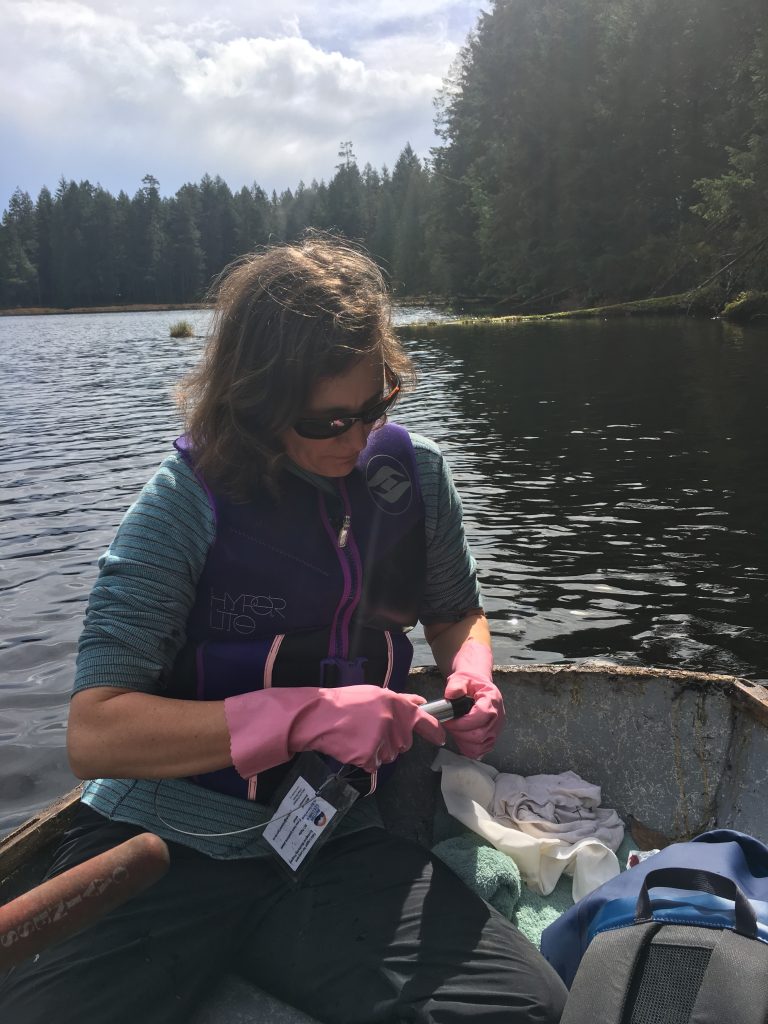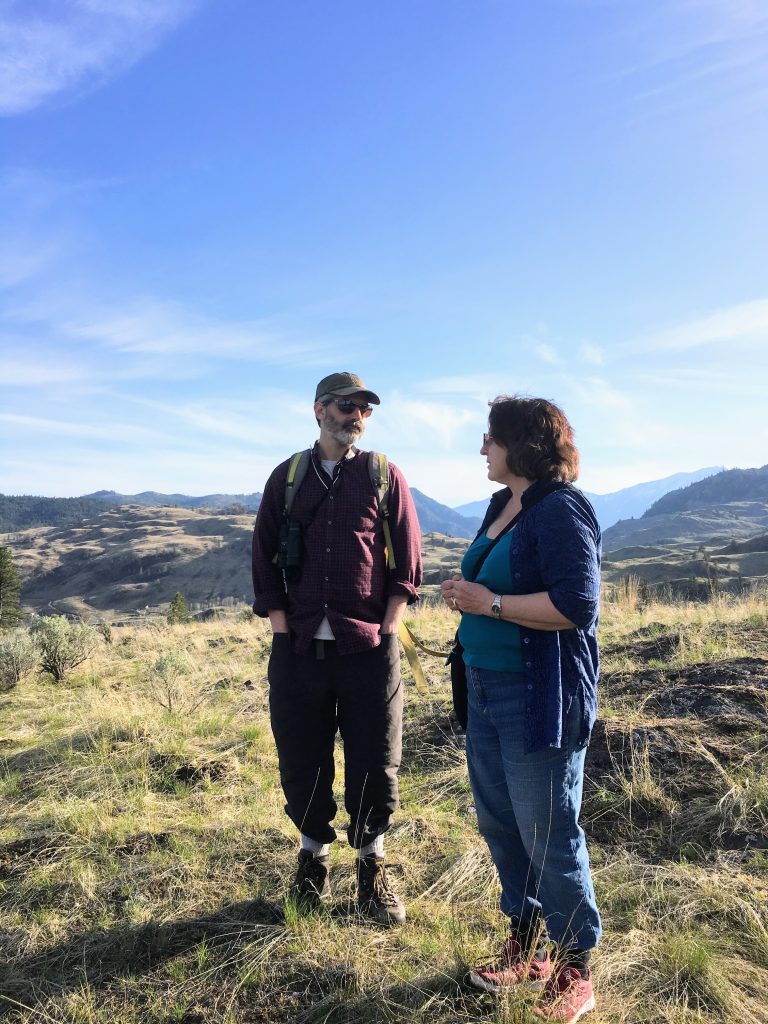What it’s like to be a biologist at BC Parks
Categories:
Everyone working in, partnering with, and visiting the 1,000+ parks and protected areas in B.C. plays a role in the conservation of these incredible places. Within BC Parks, we are lucky to have a skilled conservation team to help guide us in meeting the conservation focus of our triple mandate of Indigenous reconciliation, conservation, and recreation.
This team includes six hard-working staff on our headquarters team and eight knowledgeable individuals who work from regional offices across the province. These are our regional biologists, known in BC Parks as conservation specialists, and they do so much for parks across the province.
What does a conservation specialist do?

Conservation specialists are Registered Professional Biologists (RPBios) who know a lot about what we are protecting in parks in the region they work in. There is a dedicated conservation specialist to each region or subregion in BC Parks, and they have the privilege of working in the diverse ecosystems of the province… and it’s busy!
Among many other tasks, conservation specialists:
- provide advice and guidance about how projects and activities conducted in parks can be having impacts on nature;
- help us all understand more about park species and ecosystems;
- conduct or support projects that restore natural areas;
- guide work to manage invasive species;
- build relationships with universities and non-profit groups; and
- partner with First Nations on conservation projects in parks across the province.
The job isn’t always time outside hanging out with flora and fauna, but if you ask each of the conservation specialists, the field days are definitely a perk of the job.
What experience and skills does a conservation specialist need?

Conservation specialists may have a specialty in goshawks, amphibians, or ungulates, but the position requires them to have knowledge on a variety of terrestrial and aquatic species and ecosystems, and the legislation and policy that guides the management of these values. Identifying species, understanding how ecosystems work, and the various impacts to these are key skills.
As self starters with degrees in Biology and RPBio designation, conservation specialists have a broad suite of skills from data collection, to project and program development, and providing advice and direction to colleagues and decision makers on conservation management.
What would a typical day office and field day look like?
Good question! We sat down with Kirk, our conservation specialist in the Okanagan, to learn more about what a typical office and field day is like.
A typical field day in the Okanagan:
On a typical summer field day, I’ll rise early to avoid the mid-summer Okanagan sun. Today I’m heading up a rough road on the verge of requiring 4-wheel drive in a remote part of South Okanagan Grasslands Protected Area, an arid landscape of shrub-steppe that barely noses into Canada.
My goal for the day: counting rare plants in plots we established nearly 10 years ago. I take ‘clicker’ counters, a 50-metre measuring tape, and flagging tape. In my backpack I always carry binoculars (for rare or at-risk birds), an iPad (for recording data), and ziplocs and gloves (for collecting any samples). Some days I work alone, others I’ll meet with partners, rangers, or volunteers to carry out everything from long-term studies and monitoring to one-off site visits.


A typical office day:
While in the office, I usually have several projects that contractors and partners are working on that require regular contact and processing invoices. I do not want to be the rate limiting step! Otherwise I’ll participate in a number of partner calls and support regional staff on a wide variety of projects and questions that pop up.
On this typical office day, I start my day on a call with an update from the Gilpin Creek restoration project conducted by Okanagan Nation Alliance Fisheries group – it is on schedule and nearly complete. At 9 am I join the Southwest BC Grizzly Bear Working Group call, one of many partnership initiatives I support.
An area supervisor stops by to talk about the impacts of a project that helps reduce forest fire risk. A ranger stops by to ask about an appropriate seed mix for grassland restoration after wildfire suppression activities created fireguards throughout a grassland park.
Before the facilities program (who focuses on trails, campgrounds, and other facilities) can go out to bid with a campground expansion project, an impact assessment must be completed. I provide comment on impacts of the project, and the change in use including cumulative impacts.
Lunch time! I head off to a meeting of the regional weed committee (OASISS), where I support with various programs.
Uh oh, one of the collars on the mountain goats in Cathedral Park has stopped working and no mortality signal has been sent. I need to find this animal and confirm what might have happened to this individual… off to the field I go.
If you’re interested in learning more about our conservation program at BC Parks, visit https://bcparks.ca/conservation.




